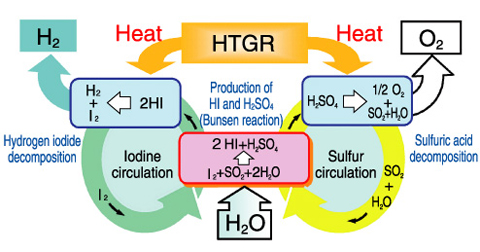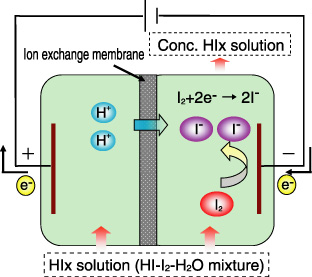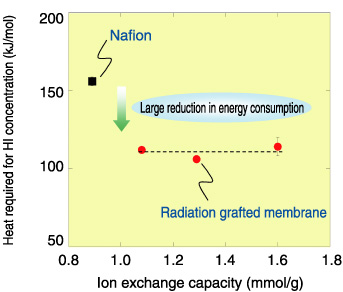
Fig.9-2 Schematic representation of the IS process

Fig.9-3 Concept of HI concentration using the ion exchange membrane

Fig.9-4 Performance comparison between radiation-grafted membranes and commercially available membranes
We have been investigating a hydrogen production method, the Iodine-Sulfur (IS) process, using a High Temperature Gas-cooled Reactor (HTGR) as the heat source. The IS process is a water-splitting thermochemical reaction cycle using Iodine (I) and Sulfur (S) as recycling agents (Fig.9-2). This technology is not only capable of expanding the use of nuclear energy, but can also contribute to carbon dioxide reduction through non-utilization of carbon sources such as fossil fuels.
The IS process, in which nuclear heat supplied by the HTGR is converted into hydrogen chemical energy, is expected to produce hydrogen with thermal efficiency of over 40%, exceeding that of conventional technologies such as water electrolysis. Efficient separation of HI from hydriodic acid (HI solution) is an important part of realizing this goal, and in this area we have been studying a separation technology using an ion exchange membrane (Fig.9-3).
The membrane is required to exhibit long-term stability in the HI solution and to possess high proton permeation selectivity. However, no commercially available membrane shows satisfactory performance.
Therefore, we conducted research to prepare a novel ion exchange membrane suitable for HI concentration using a radiation grafting method, which enables us to control the important membrane properties such as the ion exchange capacity (IEC), and which has been successfully applied to the preparation of ion exchange membranes for fuel cells.
Using poly (ethylene-co-tetrafluoroethylene) as the base film, cation exchange membranes with various IECs were prepared and their performance was examined. By analyzing the experimental results, it was shown that the heat energy required for the HI concentration could be significantly reduced compared to commercially available membranes (Fig.9-4).
In addition, a separate experimental study on the chemical stability of radiation-grafted membranes in an HI solution has revealed that the stability can be improved by chemical cross-linking treatment. In order to develop reliable membranes, we will continue our research on optimizing the synthesis conditions.
<Previous: 9 Nuclear Hydrogen and Heat Application Research | Next: 9-2 >